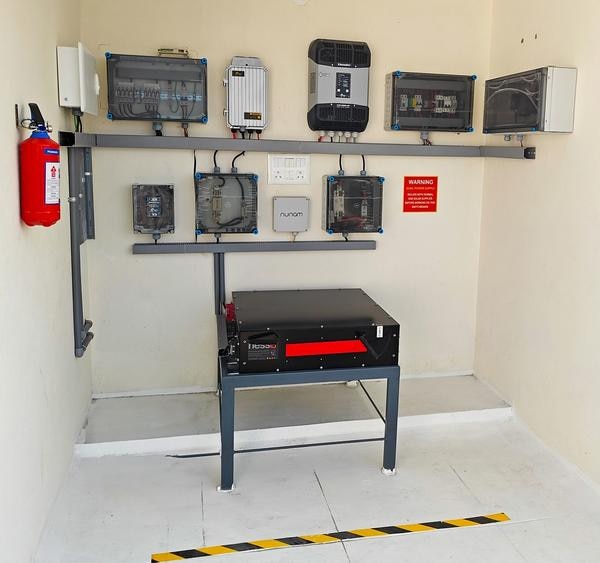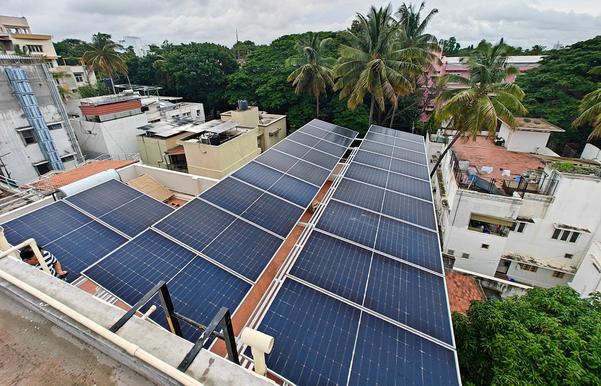A hybrid solar power system combines the benefits of both on-grid and off-grid solar configurations, offering flexibility and reliability. Here's how the system functions: Sunshine Hours Operation: During daylight, solar energy is used to power the electrical loads directly. Excess Energy Management: If the solar energy generated exceeds the energy required by the loads, the surplus charges the batteries. Any additional energy beyond the battery's capacity can be exported to the utility grid, provided the grid is available. While grid availability (e.g., BESCOM) is necessary for exporting energy, it is not needed for running the loads or charging the batteries. Supplemental Energy Sources: If solar energy is insufficient to power the loads, the system can draw the remaining energy either from the grid or from the batteries. This is programmable, allowing for customization of energy sourcing. If the grid is available, it can provide the additional power; if not, the batteries supply the difference. The system can be configured to draw a specified percentage from the battery and the remainder from the grid. Non-Sunshine Hours Operation: During non-sunshine periods, the system can be programmed to draw energy either from the grid or the battery, based on user settings. Grid Independence: When the grid is unavailable during non-sunshine hours, the entire power demand is met by the batteries. Energy Trading with the Grid: Excess energy generated and exported to the grid can be traded with the utility company. At the end of the billing cycle, if the net exported energy is positive, the utility company compensates the consumer at the prevailing tariff. Conversely, if net energy has been imported, the consumer pays the utility company according to the applicable rates. This hybrid configuration is highly versatile, allowing users to tailor their energy usage, prioritize battery use, manage energy flow, and optimize savings through potential energy exports. It offers the resilience of off-grid systems combined with the added advantage of grid connectivity for energy trading and backup.


